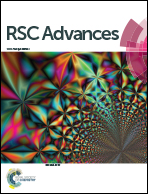Can bicarbonate replace phosphate to improve the sustainability of bioelectrochemical systems for H2 production?†
Abstract
Phosphate is generally used as an effective electrolyte buffer in bioelectrochemical systems, but it is not sustainable. Bicarbonate, if it can replace phosphate as an alternative buffer, may improve the overall economic feasibility of microbial electrolysis cells (MEC) for its application in wastewater treatment and H2 production. In this study, the performance of single-chamber MECs with combo buffers with different PO43− to HCO3− (P/C) ratios was investigated. The results demonstrate that large (about 80%) but not complete replacement of PO43− with HCO3− is feasible, indicating phosphate is necessary to maintain the electric current and the stability of MECs. The current density of MEC with P/C at 20/80 (in mol%) was comparable to that with a full phosphate buffer, and can be kept stable for as long as 1800 h, under 0.5 to 0.9 V applied voltages. Analysis by using molecular approaches, including denaturing gradient gel electrophoresis and DNA sequencing, shows that P/C ratios affect the microbial community structure of the bioanode biofilm, especially on the population of Geobacter, which is a predominant and key exoelectrogenic bacteria to produce an electric current in MEC. The results of this study will broaden the knowledge of the buffer effect and promote the potential applicability of MECs for H2 production.


 Please wait while we load your content...
Please wait while we load your content...